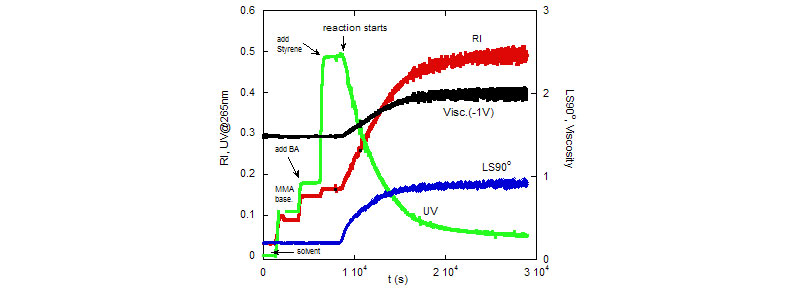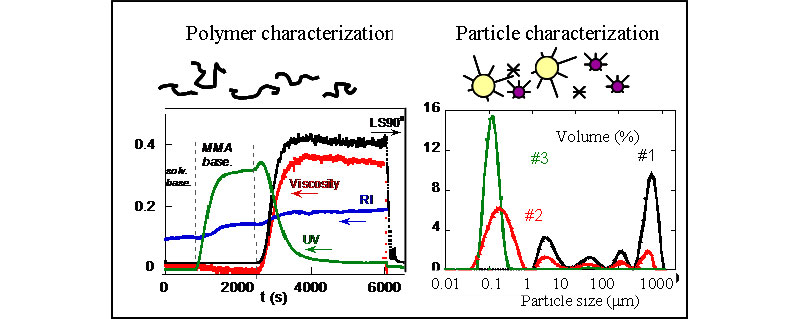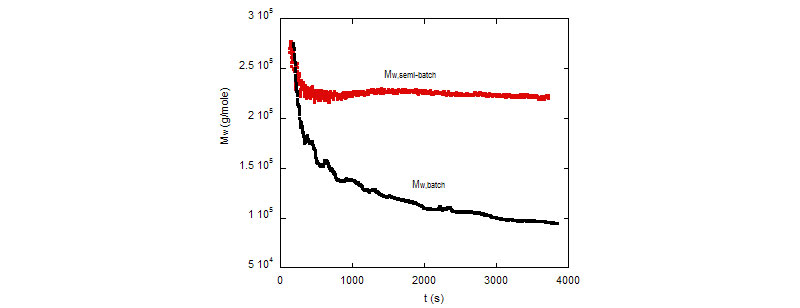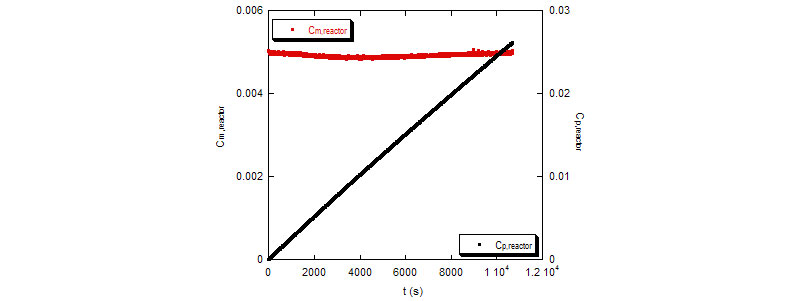- Free radical homo- and copolymerization (solvent, bulk);
--polyelectrolyte synthesis
--terpolymerization - Simultaneous continuous, non-chromatographic monitoring and discrete chromatographic monitoring of polymerization reactions
- Polymers with Desired properties 'on-command.' Passive and active feedback control of reactions using ACOMP (Automatic Continuous Online Monitoring of Polymerization reactions)
- Step growth polymerization;
- Controlled radical homo- and copolymerization (ATRP, NMP, RAFT) and other living types (ROMP);
- Batch, continuous, pressurized reactors;
- Heterogeneous phase, emulsion and inverse emulsion;
- Emulsion polymerization - simultaneous monitoring of both polymer and particle characteristics;
- Grafting and cross-linking reactions, multiblock syntheses;
- Post-polymer modifications; e.g. hydrolysis, quaternization, etc.
- Next: Extension to slurries, fluidized bed;
- Feedback control, batch, semi-batch, continuous reactors;
- Relation of microscopic distributions to macroscopic properties; e.g. adhesion, processability culminating in
- RAFT copolymerization of styrene (Sty) and 2-(dimethyl amino) ethylacrylate (DMAEA) in dimethylformamide;
- Online monitoring and characterization of the synthesis of DADMAC-DMA cationic copolyelectrolytes;
- Simultaneous multiple sample light scattering detection of LCST during copolymer synthesis
Relevant Results
Free radical terpolymerization: Determination of Mw - a new accomplishment in online monitoring using ACOMP

BA/MMA/Styrene terpolymerization reaction: Raw voltages

Theoretical predictions of Mw and for different scenarios
Heterogeneous phase polymerization
- Inverse emulsion polymerization - first heterogeneous phase polymerization reaction monitored by ACOMP

- Emulsion polymerization - a significant progress in unifying polymer and colloid worlds: Simultaneous monitoring of both polymer and particle characteristics in emulsion polymerization

Detectors on the ‘polymer side' included the MALS, viscometer, full spectrum UV/Vis, and RI detectors, as before. The ‘particle side' included a Malvern Mastersizer2000 detector, employing Mie scattering analysis from multi-angle scattering data. On the left side of figure, raw signals from the monomer/polymer side used to compute polymer mass, reduced viscosity, monomer conversion, etc, and on the right side, particle size distribution and specific surface area from the Mie scattering analysis are shown.
- Predictive control of average molar mass and composition distributions
ACOMP allows predictive control of average molar mass and composition distributions - first step: control of free radical homopolymerization


Mw for batch and semibatch polymerization reactions. Concentrations in Semi-batch from left.
